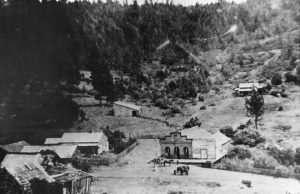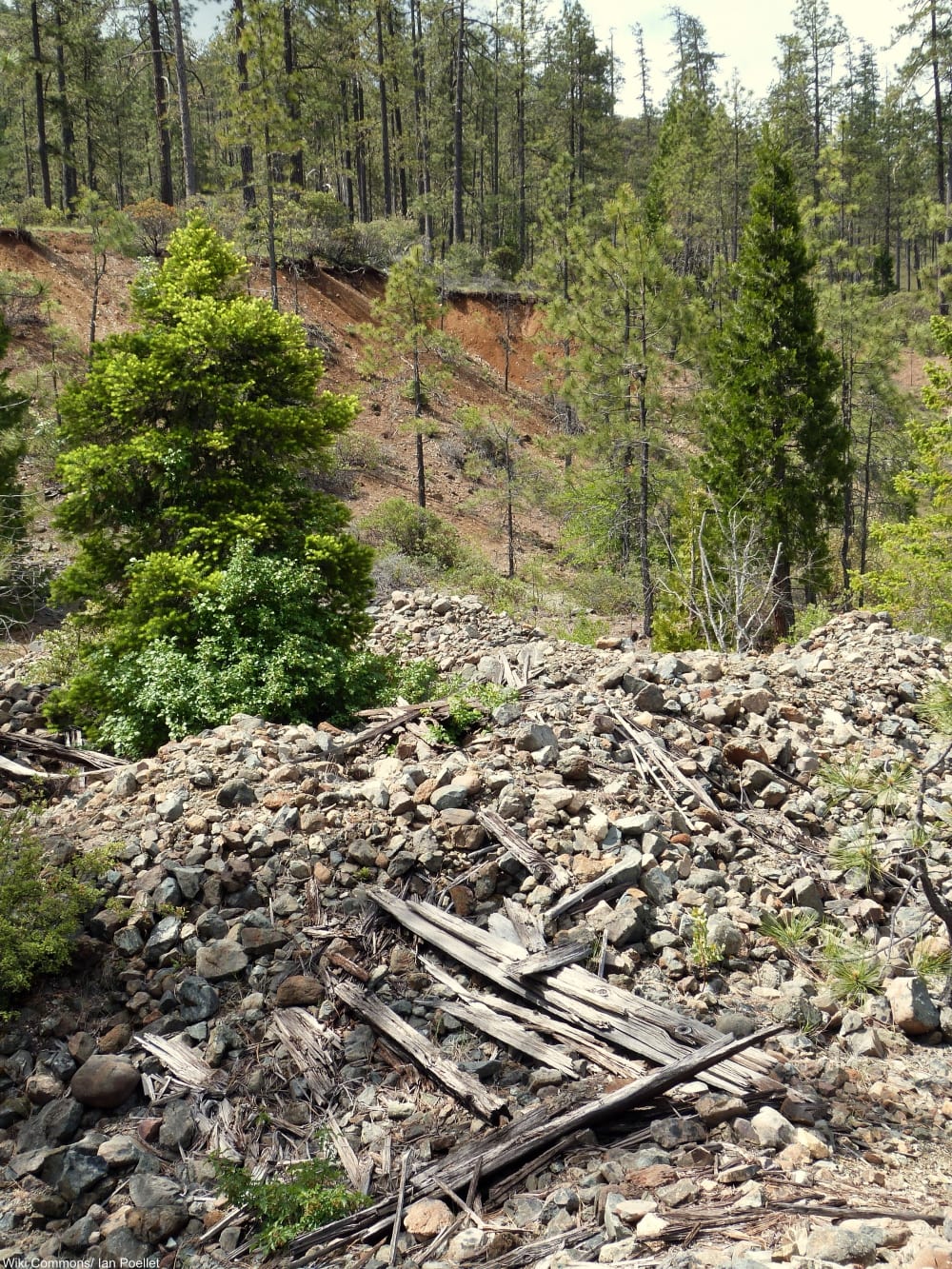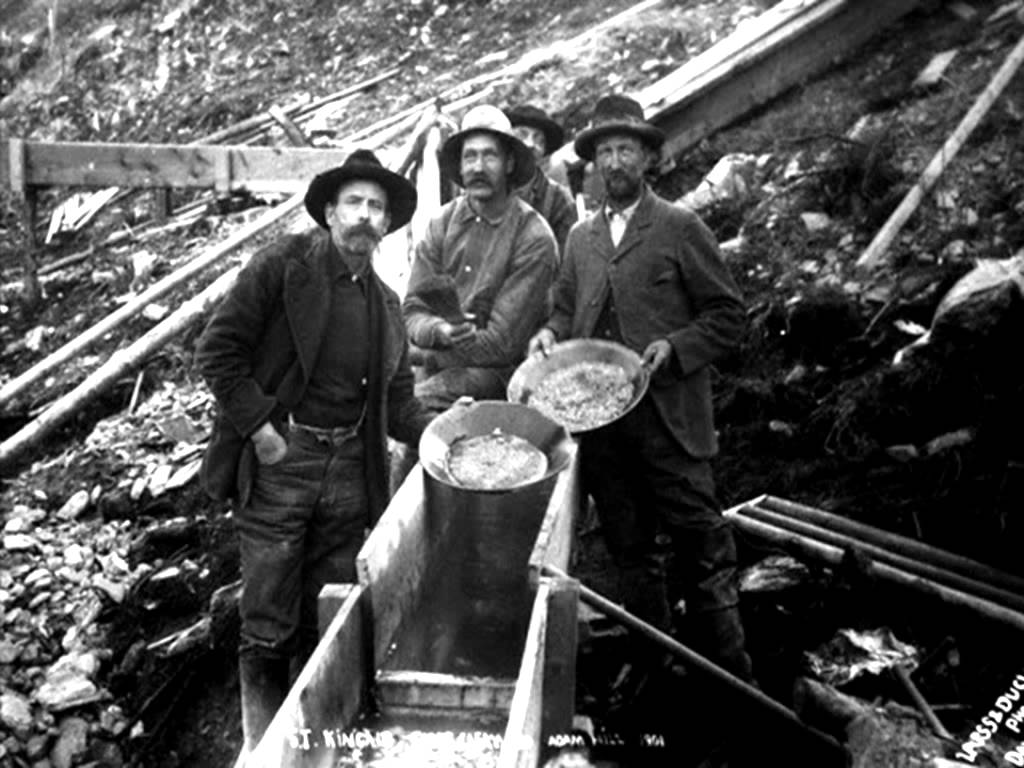
The Shifting Sands of Fortune: Unearthing America’s Legends in Oregon’s "Sailors Diggings"
America, a land forged in exploration and ambition, is as rich in its legendary tales as it is in its tangible history. From the spectral whispers of colonial ghosts to the grand narratives of westward expansion, these stories often serve as cultural touchstones, reflecting our deepest hopes, fears, and insatiable curiosity. Among the most enduring and captivating of these legends are those of buried treasure – hidden fortunes promising an escape from the mundane, a testament to daring exploits, and a tantalizing challenge to the intrepid. Few such tales resonate with the unique blend of maritime mystery and frontier spirit quite like the "Sailors Diggings" of the Oregon coast, a persistent legend that has lured generations to the shifting sands of Nehalem Bay with the promise of a lost Spanish galleon’s gold.
This is not merely a local curiosity; it is a microcosm of America’s broader fascination with the unknown, an enduring narrative woven from the threads of ancient mariners, indigenous wisdom, and the relentless pursuit of fortune. To delve into the Sailors Diggings is to embark on a journalistic journey into the heart of a legend, exploring its origins, its enduring allure, and what it reveals about the very nature of myth-making in the American landscape.
The Genesis of a Golden Dream: A Galleon’s Grave

The story of the Nehalem Bay treasure, often colloquially referred to as the "Sailors Diggings," begins, as many good treasure tales do, with a shipwreck. The prevailing legend posits that in the late 17th or early 18th century, a Spanish galleon, laden with gold, silver, and other precious cargo, met its tragic end on the treacherous shoals of the Oregon coast. Some versions even suggest it was the legendary San Francisco Xavier, a vessel rumored to have disappeared without a trace while carrying a fortune from the Philippines to Acapulco. Driven off course by fierce storms or perhaps seeking refuge, the ship foundered near the mouth of what is now Nehalem Bay.
According to the lore, the surviving crew, desperate to salvage their king’s riches, managed to offload a substantial portion of the treasure onto the shore. Faced with hostile native tribes and the daunting task of re-embarking their heavy cargo, they decided to bury it. They dug deep pits, meticulously charting the location, perhaps with the intention of returning later with a rescue party. But they never did. The sea, a fickle keeper of secrets, reclaimed the ship, and the shifting sands of the Oregon coast began their slow, inexorable work of concealing the buried hoard, leaving behind only whispers and tantalizing clues.
This foundational narrative is critical, for it imbues the legend with a potent mix of historical plausibility and romantic tragedy. Spanish galleons did ply the Pacific, and shipwrecks were common. The vast, largely uncharted Pacific Northwest coast of that era would have been a perilous place for any European vessel. The idea of a lost Spanish fortune resonates deeply with the popular imagination, linking the rugged American frontier to the grander, older sagas of conquistadors and colonial wealth.
Whispers from the Shore: Early Clues and Native Lore
What elevates the Nehalem legend beyond mere campfire storytelling are the persistent and tangible "clues" that have surfaced over centuries. The earliest accounts often come from the Tillamook and Clatsop tribes, indigenous peoples who inhabited the region for millennia. Their oral traditions speak of a "white man’s ship" that came ashore long ago, and of strange, heavy boxes buried near the bay. These stories, passed down through generations, formed the bedrock upon which later European settlers built their own interpretations of the treasure’s existence.
Perhaps the most compelling and frequently cited physical evidence comes in the form of beeswax. For centuries, chunks of beeswax, some weighing hundreds of pounds, have washed ashore along the Oregon coast, particularly near Nehalem Bay. These aren’t just random pieces; many bear the marks of being molded into blocks or cylinders, suggesting they were cargo rather than natural formations. While beeswax was a common trade item on Spanish galleons, used for candles, seals, and waterproofing, its sheer quantity and persistent appearance in this specific area fueled the belief that it was indeed part of the lost galleon’s cargo, scattered by the waves from a submerged wreck or disturbed by the shifting sands. As local historian and author Connie S. Major noted in her book "Oregon’s Lost Galleon": "The beeswax is the ghost that won’t go away, the constant reminder that something significant, something foreign, happened on this shore centuries ago."
Beyond the beeswax, other intriguing artifacts have sporadically emerged: old coins (though often too corroded to be definitively dated), fragments of what appear to be ancient ship timbers, and even, on rare occasions, what some claim are pieces of wrought iron or cannonballs. Each discovery, no matter how small or ambiguous, serves to reinforce the legend, adding another layer of perceived authenticity and stoking the fires of hope among treasure seekers.
The "Sailors Diggings": A Century of Obsession

The true "Sailors Diggings" phase of the legend began in earnest with the arrival of European settlers in the 19th century. Drawn by the rich timberlands and fertile valleys, they also heard the whispers of hidden gold. The term itself likely refers to the countless pits, trenches, and tunnels that have been dug by hopeful prospectors over the decades, each convinced they were on the verge of uncovering the fabled treasure.
One of the most persistent features of the Nehalem legend is the "money pit" phenomenon. Similar to the Oak Island mystery in Nova Scotia, the Nehalem site is often described as a series of interconnected, booby-trapped pits, designed by the original Spanish crew to deter would-be thieves. Early diggers reported encountering layers of logs, clay, and rock, often covered by quicksand or collapsing tunnels, making excavation incredibly difficult and dangerous. The belief was that these layers protected the main vault, deeper down.
Generations of individuals and syndicates have poured fortunes into these diggings. Farmers, loggers, dreamers, and even serious engineers have leased land, brought in heavy equipment, and spent years of their lives chasing the elusive prize. Tales abound of near misses: a shaft hitting a wooden beam that was surely part of the treasure vault, only for the pit to flood or collapse; a metal detector indicating a huge mass of metal, only for the signal to vanish with the next tide. The landscape around Nehalem Bay is still scarred by these efforts, a testament to the unyielding grip the legend holds.
One of the more famous attempts involved the "Nehalem Treasure Company" in the early 20th century, which invested significant capital and employed steam-powered pumps and dredges. They dug deep, encountering the familiar layers of wood and clay, but ultimately failed to unearth the main treasure. Their efforts, like so many others, were thwarted by the relentless shifting of the sand dunes, the unpredictable tides, and the sheer scale of the undertaking. Each failure, however, rarely dampened the spirits of the next generation of seekers; instead, it often served to refine the theory, to suggest that they were simply digging in the wrong spot, or that the previous attempt had been just shy of success.
Beyond the Gold: What the Legend Represents
The enduring appeal of the Sailors Diggings, and indeed many American treasure legends, transcends the mere prospect of riches. It speaks to deeper aspects of the American psyche. Firstly, it embodies the spirit of exploration and frontierism. Even in a modern, mapped world, the idea of a hidden, untouched fortune offers a contemporary frontier to conquer, a personal wilderness to tame. It’s a continuation of the same drive that pushed pioneers westward, seeking new opportunities and testing their mettle against the unknown.
Secondly, it highlights our fascination with history and the past. These legends offer a tangible link to bygone eras, allowing us to imagine the lives of ancient mariners, the challenges they faced, and the secrets they left behind. The treasure isn’t just gold; it’s a time capsule, a physical manifestation of history waiting to be unlocked.
Thirdly, the Sailors Diggings, with its constant cycle of hope and disappointment, reflects the very nature of the American Dream itself. The promise of sudden wealth, of striking it rich through luck and perseverance, is deeply embedded in the national narrative. For many, the legend offers a tantalizing alternative to the grind of everyday life, a lottery ticket promising not just money, but a complete transformation.
Finally, the legend serves as a powerful community touchstone. For the people of Nehalem and the surrounding Oregon coast, the treasure is more than a story; it’s part of their identity. It’s a shared secret, a source of local pride, and a common thread that connects generations. Local businesses might even subtly lean into the legend, knowing it draws curious visitors and fuels conversations. It’s a narrative that binds the community, even if the treasure remains stubbornly elusive.
The Unyielding Grip of the Unknown
Today, the Nehalem Bay treasure remains undiscovered. The shifting sands continue their slow dance with the ocean, perhaps burying the secret ever deeper, or perhaps slowly revealing it in tantalizing glimpses. Modern technology – ground-penetrating radar, advanced metal detectors, and precision mapping – has been brought to bear on the problem, but the complex geology of the area, combined with the sheer scale of the historical searches, makes pinpointing a definitive location incredibly difficult.
Yet, the legend persists. New generations of treasure hunters arrive, armed with fresh theories, new equipment, and the same unyielding hope that has driven their predecessors for centuries. They comb the beaches after storms, study old maps, and listen to the whispers of the wind, forever drawn by the siren song of the lost galleon.
The "Sailors Diggings" of Oregon is more than just a tale of buried gold; it’s a profound narrative embedded in the fabric of American folklore. It’s a testament to our enduring belief in the extraordinary, our relentless pursuit of the impossible, and our deep-seated connection to the mysteries that lie hidden just beneath the surface of our everyday lives. Whether the treasure ever truly surfaces is almost beside the point. The real treasure lies in the story itself, in the human spirit it ignites, and in the timeless allure of the unknown that continues to shape the legends of America.


